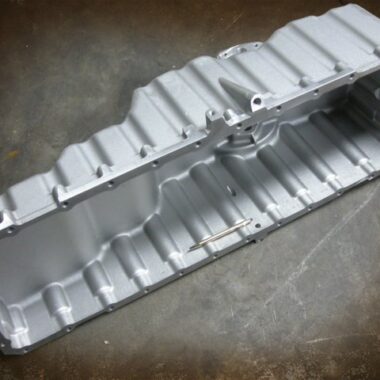Aluminum Casting Demystified: Secret Techniques for Success
Wiki Article
Dive Into the World of Light Weight Aluminum Casting: Comprehending the Different Methods
Light weight aluminum spreading is an essential procedure in the manufacturing market, with different methods utilized to develop exact and intricate elements. From the typical sand casting technique to the advanced die spreading process, each technique supplies one-of-a-kind advantages depending on the demands of the task.Sand Casting Technique
Sand spreading, a widely-used approach in light weight aluminum spreading procedures, includes producing mold and mildews made of compressed sand for putting molten metal. Once the mold is all set, it is firmly positioned in a flask and molten light weight aluminum is put into the cavity.After the steel has actually cooled down and strengthened, the sand mold is broken away to disclose the aluminum casting. Sand spreading permits the production of complex forms and huge components that may be pricey or tough to produce using various other techniques. It is also a sustainable strategy as the sand can be recycled and used numerous times, lowering waste in the casting process.
Irreversible Mold And Mildew Strategy

One substantial advantage of the Permanent Mold Technique is the improved dimensional accuracy it offers. The steel mold and mildew enables tighter resistances and better information in the final aluminum castings compared to sand spreading approaches. This accuracy makes it a favored choice for applications where tight dimensional control is essential, such as in the aerospace and automobile industries.

Die Casting Process

Financial Investment Casting Technique
Making use of an accuracy casting method, Investment Casting Method entails producing elaborate aluminum parts by pouring molten steel into a ceramic mold. This procedure, also recognized as lost-wax casting, begins with the production of a wax pattern of the preferred part (aluminum casting).pop over to this site Investment casting is generally used for manufacturing elements in sectors where elaborate styles and limited tolerances are called for, such as aerospace, automotive, and medical devices. The convenience and precision of the Financial investment Casting Approach make it an important method in the globe of light weight aluminum casting.
Lost Foam Spreading Approach
Having actually explored the elaborate precision of Financial investment Casting Strategy, the focus now shifts to the ingenious technique of Lost Foam Casting in light weight aluminum part manufacturing. Lost Foam Casting, likewise understood as evaporative pattern casting, is a contemporary strategy where a foam pattern of the desired part is created and then coated with a refractory material. The coated foam pattern is after that hidden in sand, and molten light weight aluminum is put right into the mold and mildew. As the metal fills up the mold and mildew, the foam evaporates as a result of the heat, leaving a clean dental caries in the form of the wanted part.Among the major advantages of Lost Foam Casting is its browse around these guys capacity to produce intricate shapes with complex information, frequently in a solitary piece without the need for extra machining. This approach is additionally understood for its high dimensional precision and smooth surface area finish. In Addition, Lost Foam Casting is an affordable process as it decreases the need for cores and permits the manufacturing of light-weight components. Despite its benefits, Lost Foam Spreading needs cautious control of the casting procedure to guarantee and stop problems top quality elements.
Verdict
Finally, light weight aluminum spreading offers a selection of techniques such as sand casting, long-term mold method, die casting, financial investment spreading, and lost foam casting. Each approach has its very own advantages and applications, making aluminum casting a functional and commonly used procedure in different markets. Recognizing the distinctions in between these approaches is important in picking one of the most appropriate casting technique for particular manufacturing needs.Sand spreading, a widely-used method in aluminum spreading processes, includes producing mold and mildews made of compacted sand for pouring molten steel. aluminum casting.The Long-term Mold And Mildew Method, like sand spreading, is an additional widespread approach employed in aluminum spreading processes, using distinctive benefits in terms of mold and mildew reusability and dimensional precision. The metal mold and mildew permits for tighter tolerances and finer details in the final aluminum spreadings compared to sand spreading techniques. The 2 primary types of die casting are cold chamber die spreading and hot chamber die casting, each suitable for various Read More Here types of aluminum alloys.In final thought, aluminum casting uses a selection of approaches such as sand spreading, irreversible mold and mildew method, die casting, financial investment spreading, and lost foam casting
Report this wiki page